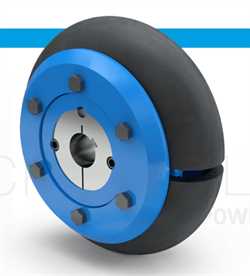
Product Name: Reich Multi Cross Rillo Highly Flexible Tyre Coupling
Brand: Reich
Product Code: Multi Cross Rillo
Tags: Reich
Flexible Coupling
Coupling
Reich Flexible Coupling
Multi Cross Tyre
Reich Multi Highly Flexible Tyre Coupling
Reich Rillo Flexible
Reich Multi Cross Rillo Highly Flexible Coupling
Multi Cross
Rillo Highly Flexible Tyre
Cross Rillo Highly Flexible Tyre Coupling
Reich Multi Highly Tyre Coupling
Flexible Tyre Coupling
Multi Cross Flexible Coupling
Reich Multi Rillo Highly Flexible Tyre Coupling
Multi Highly Tyre
Rillo Highly Flexible
Reich Cross
Reich Cross Highly Flexible
Reich Multi Cross Highly Tyre Coupling
Reich Rillo Flexible Coupling
Highly Flexible Tyre Coupling
Are you interested in the product Reich Multi Cross Rillo Highly Flexible Tyre Coupling from manufacturer Reich with code Multi Cross Rillo? Contact us now and get offer. Imtek Engineering, the fastest and most reliable industrial equipment supplier in the world, will offer you the best offer!
Get Offer With E-Mail: info@im-tek.com
Get a offer for Reich Multi Cross Rillo Highly Flexible Tyre Coupling from our live support team now!
AdvantagesHigh torsional flexibility with progressive torsional deflection characteristicHigh compensating capability for axial, radial and angular displacementsEasy and time saving mounting of the coupling hubs thanks to the use of taper bushesRadial change of the rubber element without axial movement of the coupled machinesBacklash-free torque transmission even in case of alternating directions of rotationHigh torsional vibration and shock load absorbing capabilityBody soundproofingWear-resistant and maintenance-free General Technical Description The MULTI CROSS RILLO (short form: MCR) are highly torsionally flexible tyre couplings with progressive torsional deflection characteristic. The salient feature of the MULTI CROSS RILLO shaft couplings is that the coupling hubs are supplied with commercially available taper bushes for nominal torques of up to 14 675 Nm. This allows easy and time saving mounting of the coupling hubs on the shaft. Special tools are not required. The torque transmission element of the MULTI CROSS RILLO coupling is a rubber tyre reinforced with fabric plies. This tyre transmits the torque without torsional backlash, it is wear-resistant and maintenance-free. The rubber tyre is slotted to allow easy radial mounting without axial displacement of the coupled machines. MULTI CROSS RILLO shaft couplings reduce torque surges substantially. The high torsional flexibility has a particularly beneficial effect in systems where torsional vibrations occur creating stresses in the drive train. The use of a rubber tyre as the transmission element compensates to a large extent for axial, radial and angular shaft displacements.